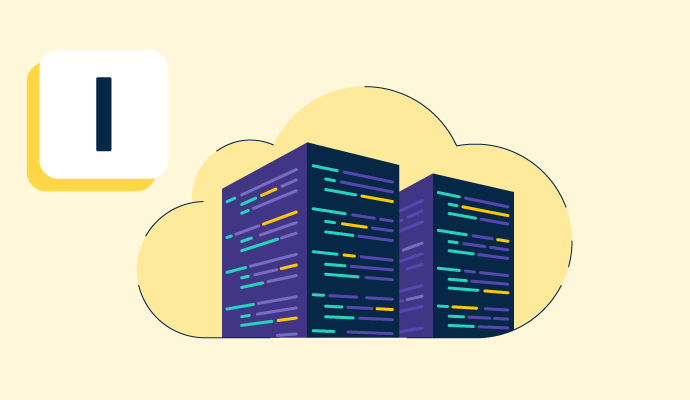IPv4 and IPv6 are two versions of network layer protocols that use 32-bit and 128-bit addresses to secure smooth data packet routing among devices across networks. IPv4 and IPv6 environments employ IP address intelligence software for geolocation, threat detection, network performance optimization, and regulatory obligations. The Internet Engineering Task Force (IETF) developed IPv6 to overcome the limitations of IPv4, which is why they are different.
What is the difference between IPv4 and IPv6?
IPv4 uses a 32-bit numeric address, whereas IPv6 uses a 128-bit alphanumeric address. As a result, IPv6 accommodates 1,028 times more IP addresses than IPv4. IPv6 is also the latest IP generation, while IPv4 is the first stable internet protocol version.
IPv4 addresses are represented using a decimal notation with dots separating four octets (example: 192.168.0.1). They range from 0 to 255 in terms of 0s and 1s.
IPv6 addresses use hexadecimal notation and contain eight fields, each containing two octets (example: 2001:0db8:85a3:0000:0000:8a2e:0370:7334).
The table below shows the differences between IPv4 and IPv6 regarding address representation, security, encryption, integrity, and routing performance.
| IPv4 | IPv6 | |
| Definition | The fourth internet protocol version, uses a 32-bit numeric address for data transmission across networks | Most recent internet protocol version, which uses a 128-bit alphanumeric address to overcome the limitations of IPv4 |
| Example | 192.168.0.1 | 2001:0db8:85a3:0000:0000:8a2e:0370:7334 |
| Use cases | Due to affordability, most of the internet, legacy infrastructure systems, intranets, and private networks | Internet services providers (ISPs), microservices, and complex Internet of Things (IoT) devices |
| Loopback address | 127.0.01 | ::1 |
| Address length | A 32-bit (232) address with four octets | A 128-bit (2128) address that contains 16 octets |
| Address size | Approximately 4 billion unique addresses | Approximately 340 undecillion unique addresses |
| Address types | Unicast, broadcast, and multicast address modes | Unicast, anycast, and multicast addresses |
| Address notation | Dotted decimal notation, full stops separate four lots of three-digit numbers | Hexadecimal notation, whereby colons separate eight lots of four-character alphanumeric addresses |
| Address configuration | Manual configuration and dynamic host configuration protocol (DHCP) | Various address configurations, including manual, DHCP, stateless address auto-configuration (SLAAC), and renumbering |
| Address translation | Network address translation (NAT) to enable private network devices to connect with public IP addresses and ports | Uses NAT64 or NAT46 for IPv4 to IPv6 translation |
| Address resolution | Address resolution protocol (ARP) is the standard for IPv4 deployments | Neighbor discovery process for address resolution |
| Address classes | IPv4 has five classes: class A (0-127), class B (128-191), class C (192-223), class D (224-239), and class E (240-255) | No classes as it doesn’t rely on classless inter-domain routing (CIDR) |
| Header fields | An IPv4 packet header contains 14 fields, including the optional ‘options’ component | 8 header fields, uses extension headers for options |
| Header length | 20 bytes, can go up to 60 bytes depending on optional fields and flag | 40 bytes |
| Header checksum | Features a header checksum to identify corrupted packet headers | No header checksum, which speeds up packet forwarding |
| Transmission scheme | Limited and direct broadcast schemes | Multicast addressing |
| Packet flow identification | Uses a combination of source address, source port, destination address, destination port, and protocol to identify flow | Uses a flow label in its header to identify spoofed packets |
| Fragmentation | Senders and forwarding routers are both responsible for fragmentation in IPv4 | Only senders are responsible for fragmentation |
| End-to-end connection integrity | Not possible | Achievable |
| Compatibility | Most networking hardware, operating systems, and network infrastructure, but not with IPv6 | Neither legacy systems developed for IPv4 nor IPv4 |
| Domain name server (DNS) resolution | A records | AAAA records |
| Routing efficiency | Uses header information for hierarchical routing and packet delivery | Routing tables and globally routable addresses for improved latency |
| IP security (IPsec) | Optional | Integrated security features in its extension header structure |
| Encryption and authentication | Neither | Both |
| Privacy | Address masking to hide the last eight bits of IP addresses | Random temporary addresses in IP privacy extensions |
Learn how reverse DNS lookup helps find visitors’ IP addresses and de-anonymize web traffic.

Sudipto Paul
Sudipto Paul is a Sr. Content Marketing Specialist at G2. With over five years of experience in SaaS content marketing, he creates helpful content that sparks conversations and drives actions. At G2, he writes in-depth IT infrastructure articles on topics like application server, data center management, hyperconverged infrastructure, and vector database. Sudipto received his MBA from Liverpool John Moores University. Connect with him on LinkedIn.
